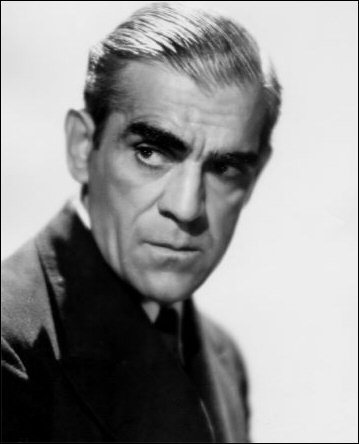| Page: |
| Home > Technical Chat > Exhaust manifold design - from a Garret engineer | |||||||
|
326 Posts Member #: 1323 Senior Member |
28th Feb, 2012 at 10:57:45am
On 28th Feb, 2012 Paul S said:
I didn't think we were talking about A series here. The standard primary length of 375mm or 15" seems to work well. . Thanks Paul I Am also talking Turbo 'A' Series - I am hopeful that my proposal to the MSA Hillclimb committee in March , might enable me to find the necessary enthusiasm to finally start the engine build on my Moggy |
||||||
|
3594 Posts Member #: 655 Post Whore Northern Ireland |
28th Feb, 2012 at 11:42:54am
On 27th Feb, 2012 evolotion said:
On 27th Feb, 2012 stevieturbo said:
Either the compressor is too small to supply enough air. Or your turbine is so large there simply isnt enough energy to spin it fast enough to make boost. So what size is the compressor ? engine ? Power ? it certainly wont be because the compressor is too hard to drive. That's the easy bit. I know you know your onions buddy, and i appreciate what your saying but i really want to build this engine to see what it does, i dont want to debate/discuss it :) you can be the first to say i told you so when i run a 15dead. only posted in here as i disagree with the generic "tuned lengths don't work on a turbo" philosophy but at the same time i can completely appreciate why a shorter, good flowing more direct manifold would be of more benefit in certain applications. i.e. a modest equal legnth manifold. i just feel a larger turbine would allow you to exploit a properly tuned manifold rather than just making it equal length and nice flowing. but obviously this is not for everyone as it will be very very laggy. My point is though. Building an engine with a very narrow power band trying to seek an efficiency somewhere will likely be much slower because of that narrow power band than a car with more back pressure but a much wider operating range. The long/short manifold could be almost impossible to answer. From the LS/V8 world, there are people making 2000bhp using fancy tubular stainless manifolds with equal lengths. But there are also people making 2000bhp using factory cast iron log style truck manifolds. With the flexibility a turbo systems offers to make power, almost anything can be made to work even when it can appear terrible in theory. There are far more power gains to be had with boost than trying to match tuned lengths or any other n/a style of tuning. Even tuned lengths on a n/a build are only worth very small increases, and will be very dependant on head design, camshaft, cam timing etc. Boils down to time, value for money etc etc. But you're also intelligent enough to know that swapping components without actually testing how they are performing in the first place is a bit crazy. The first thing you need to do is find out what the ex manifold pressure is throughout the rpm range. Only that info will tell you which direction you need to go in terms of turbine selection. or you could maybe seek out a more efficient turbocharger/turbine combo. As these are also appearing from various makers with lighter and better flowing wheels which allow more flow, but with virtually no negative in terms of spool. Edited by stevieturbo on 28th Feb, 2012. 9.85 @ 145mph
|
||||||
|
8604 Posts Member #: 573 Formerly Axel Podland |
28th Feb, 2012 at 12:18:37pm
The thing is with a turbo-charged engine is that you can always turn up the boost a bit more to cover deficiencies elsewhere.
Saul Bellow - "A great deal of intelligence can be invested in ignorance when the need for illusion is deep."
|
||||||
 2909 Posts Member #: 83 Post Whore Glasgow, Scotland |
28th Feb, 2012 at 12:25:20pm
Stevie Thats why I don't want to discuss it,I know I'm not going about this in a logical manner but I really want to try it and that's that :) turbo 16v k-series 11.9@118.9 :)
|
||||||
|
326 Posts Member #: 1323 Senior Member |
3rd Mar, 2012 at 02:32:20pm
Having just been playing around with an Excel thingy for tuned length 4-1 exhaust systems , on small capacity engines the suggested optimum primary lengths are ridiculously long[45plus"] when the optimum rpm/ power get down below 6000 rpm .
Edited by carl talbot on 3rd Mar, 2012. |
||||||
 12307 Posts Member #: 565 Carlos Fandango Burnham-on-Crouch, Essex |
3rd Mar, 2012 at 03:10:04pm
on the mini I'd go LCB style as the middle 2 are siamesed, so your esentially replicating that on the outers (or trying to)
On 28th Aug, 2011 Kean said:
At the risk of being sigged... Joe, do you have a photo of your tool? http://www.turbominis.co.uk/forums/index.p...9064&lastpost=1 https://joe1977.imgbb.com/ |
||||||
|
326 Posts Member #: 1323 Senior Member |
3rd Mar, 2012 at 08:21:39pm
http://www.epi-eng.com/piston_engine_techn..._technology.htm |
||||||
| Home > Technical Chat > Exhaust manifold design - from a Garret engineer | |||||||
|
|||||||
| Page: |
